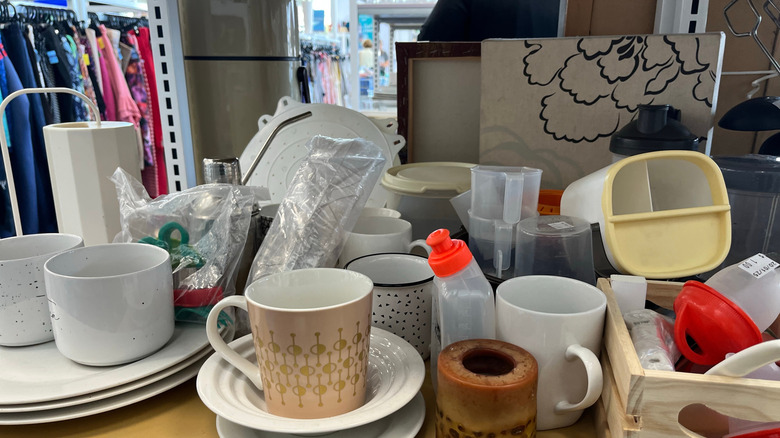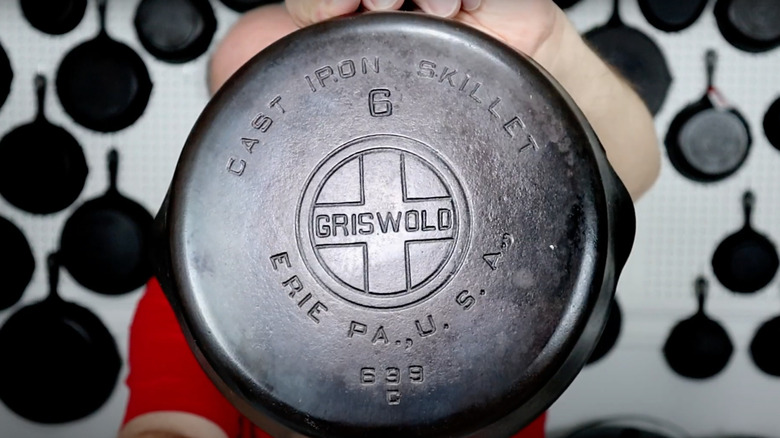The Rare Vintage Kitchen Item You Should Keep Your Eyes Peeled For At Thrift Stores
From searing to baking, cast iron skillets are an essential piece of cookware that every kitchen can benefit from. These durable dishes are excellent at retaining heat and offer non-stick properties when properly seasoned. Additionally, if you know how to care for your cast iron pan, it can last a lifetime. When looking to buy one of these pans, you'll encounter plenty of affordable, budget-friendly options. You will also find a handful of rare, vintage brands that carry a hefty price tag. Griswold cast iron skillets with rare numbers such as #13, for example, can be found in resale markets for more than $6,000. So, if you ever spot the Griswold logo at your local thrift store, don't hesitate to pick up this rare and valuable kitchen item.
Even if you come across a Griswold pan that's seen better days, you can easily remove rust from a cast iron pan with the ketchup method, so it's still worth grabbing. In fact, there are several ways to restore old cookware, including using a potato to clean your cast iron skillet. But before you go scouring the kitchen wares aisle at your local thrift store, you need to know how to identify the Griswold brand and what valuable traits to look out for.
Identifying vintage Griswold cast iron pans
When looking for these pieces at thrift stores, estate sales, or yard sales, the number one thing to look for is the Griswold logo on the bottom of the pan. Throughout the years, there have been several iterations of this logo including ones with slanted letters, ones with cross symbols, and a spider-shaped logo accompanied by the word "Erie." Text including "Erie, P.A. U.S.A." may also appear on the bottom of the pan, indicating where the pans were made. These logo variations can help collectors identify the approximate time period that each particular pan was manufactured. Older versions of these pans often featured a heat ring — this was beneficial for cooking on a wood or coal range, but as these cooking methods slowly gave way to electric cookers, Griswold stopped making pans with heat rings.
Many of the Griswold pans also feature a number, either on the bottom or the handle of the pan. Serious cast iron collectors know that #13 and #20 Griswolds are particularly rare as there were fewer of these styles produced. At the time, there was also a lot of superstition surrounding the number 13, which may have contributed to the lower production numbers. Today, finding one of these pans is incredibly rare, but if you do see one, scoop it up quickly as these little pans can sell for thousands of dollars.

